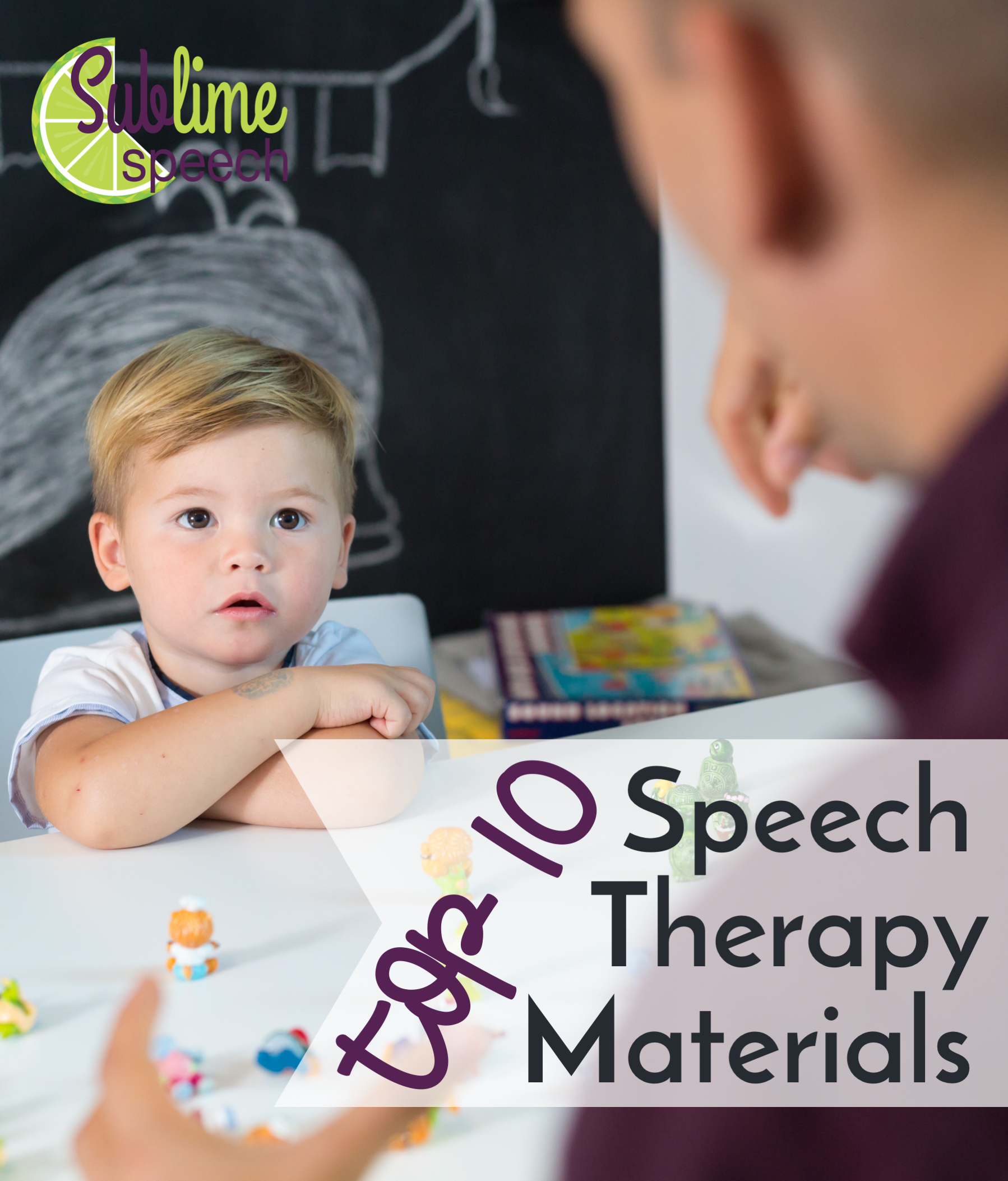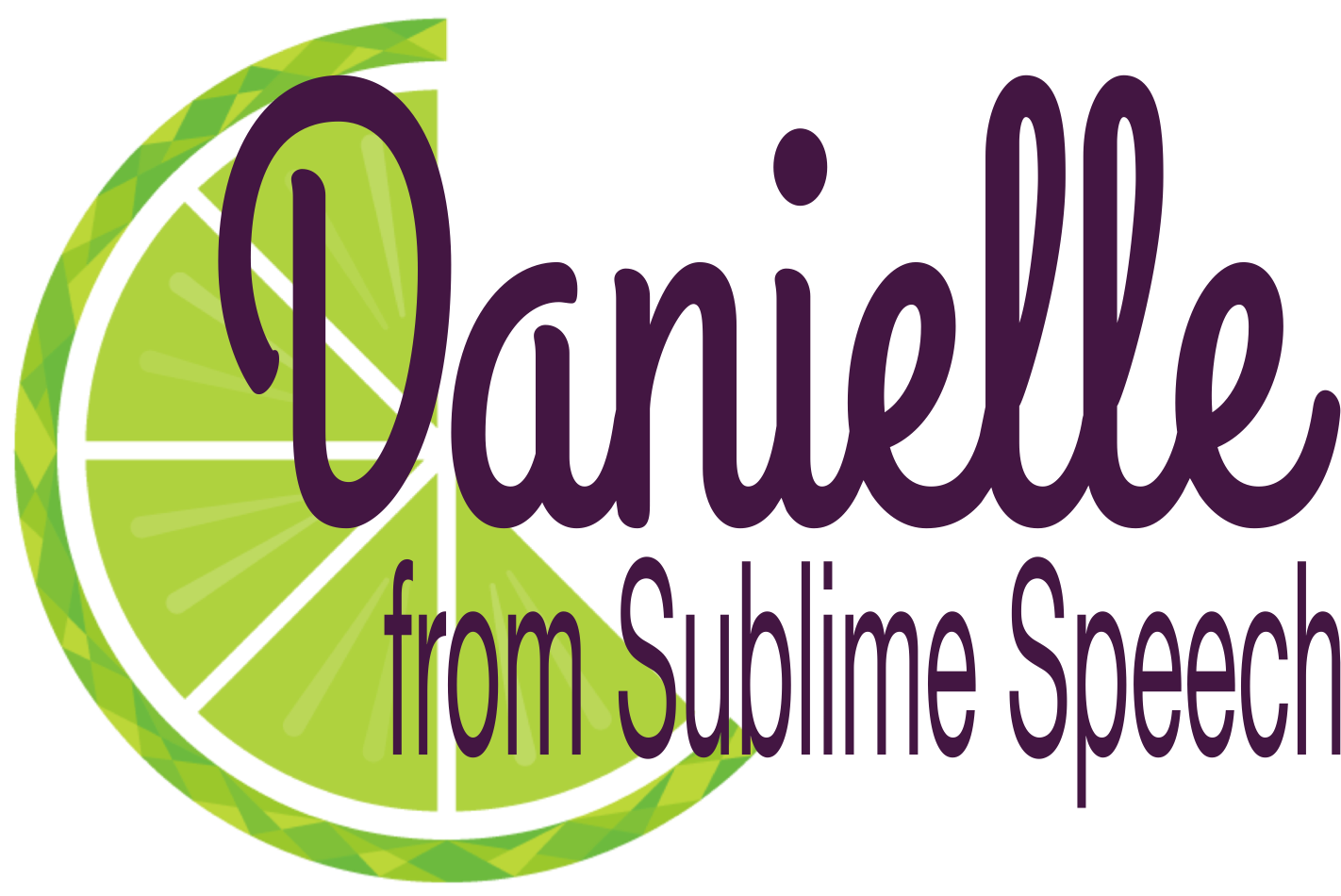I get asked frequently which speech/language therapy materials I recommend or are my favorite to use. Today I’ll be sharing 10 of my favorites that I use weekly and why I love them!
1 – Story Champs Intervention
I utilize Story Champs with so many of my students. I wrote a review of it last year as well that you can view here. Story Champs is flexible and I’ve seen really good growth from utilizing it. In my mixed language/articulation groups, I’m able to target story grammar, vocabulary, articulation, and more with this tool. There is also a Spanish Bilingual version available now.
Cost: $298.00
2 – iPad/Apps
I’ll just get this out of the way here. I do utilize my iPad and apps frequently as therapy tools. My iPad is much easier to take around to my quick artic sessions, screenings, etc. than a pile of artic cards or paper screeners. I utilize it in various ways as well, using apps that aren’t solely for therapy as well. I will say that we don’t ALWAYS use the iPad and I never let my students just “play” on it (unless they’ve earned free time after an assessment). I typically sit next to them when we use it and I always hold it and have control in the session. There are many great apps out there that can unleash your creativity as a clinician and apply speech/language skills in a different way. I would recommend attending the upcoming XceptionalED Special Apps Update conference if you are interested in learning more.
Cost: iPad $329-1149 Apps: Vary $0-90
3 – Books
We use books constantly in therapy. They are wonderful for mixed groups, themes, etc. I typically find my books at thrift stores because they are so affordable there. Occasionally I splurge on new literature. There are so many great books that I won’t be naming them. However – here are a few great lists by some of my favorite bloggers: Crazy Speech World; Speechy Musings Book Lists by Speech Sound and Books for Teaching Story Grammar in Speech Therapy; The Speech Space; etc.
Cost: $0.50-$20
4 – Super Duper
Honestly, for the most part I have moved away from the games and card decks from companies like Super Duper. However, there are a few products that are flexible enough to be used for many goals and groups. These are the products I pull on occasion to target 4-5 different goals in a session: “WH” Chipper Chat; Pirate Talk, What Do You Say…What Do You Do… At School?; The Question Challenge Card Game; Turtle Talk Fluency and Language Game
Cost: $55-70
5 – Board Games
We don’t play a lot of games but when we do, they address goals! Now, I preface this by saying that most of these will need some adaptations made to make it work in therapy. But that’s why we do the therapy and the material doesn’t do it. Some of my favorites include Hedbanz, Blurt, 5 Second Rule Jr, Riddle Moo This, and others. Again, I hunt thrift stores for these as I would much rather spend $3 on a gently used game than $15 on a new one.
Cost: $12-20
6 – Teachers Pay Teachers
I would be lying if I didn’t say that I utilize many wonderful materials from TpT. Not everything on TpT is created equal and I highly suggest reading information and reviews carefully. Also look for any information about the use of the product from the seller or others. Some of my go-to resources include Editable SLP Assessment Templates; Cycles for Phonology Toolkit; Grab N’ Go “WH” Questions; Nyms-O; Nonfiction Texts Targeting Articulation and Language
Cost: $3-30
7 – Your School Campus
There is no reason to keep yourself inside the therapy room at all times. Get out of there! Within your school and on your campus are great opportunities for language and articulation. We have done attribute searches (find something red, find something square), sound walks (find your articulation sound), and more. Some of our favorite places to visit are bulletin boards, the playground, and my administrators (we like to ask them questions or tell them stories using our good articulation for example). A big part of our job is moving the skills we work on from isolation into the general education environment. These structured therapy times outside of the speech room can do just this.
Cost: Free
8 – Maps
A lot of my students have not been outside of the city they are growing up in. They may travel to a nearby state or to Mexico to visit family occasionally. We like to use maps – the bigger, the better – in my speech room. We can use these to plan a road trip and read about/discuss attractions along the way. We can hunt for cities that have their speech sound in the name. We can talk about what we see around a place on the map (river, highway, city, park, etc.). Maps are very interesting to kids in my experience. They also love to use google maps to explore place they haven’t been or are just interested in. We’ve used google maps to look at the house I grew up in – they LOVED that! You can often get maps for free from local tourism shops, services like AAA, or from relatives who don’t want that atlas any longer.
Cost: Free
9 – Sensory Materials
I love integrating sensory bins and materials with my “everyday” speech materials. We love using kinetic sand, fake snow, water beads, etc. to create a sensory component of our sessions. I will often hide thematic/sound-based dinky doodads and other tiny items in sand and excavate them. We may close our eyes and describe what we feel using our description details. We might just put some laminated TpT cards or other stimuli in the sensory item and work on those. Regardless of the activity, my students love working with sensory materials.
Cost: Free – $10
10 – Box of Highly-Preferred toys/items
If you work with students using PECS or other AAC devices/systems, having many highly-preferred items at your fingertips can be the key to unlocking their language skills. I often keep several varieties of wind-up toys, light-up toys, poppers, sensory items, etc. nearby. This allows me to quickly have students requesting with attributes and working on describing their items. This can also help in motivating younger students to complete tasks and earn a preferred item. I recommend looking in the dollar sections, holiday clearance, thrift stores, and even fast food meal toys. Pro tip: keep these out of reach/sight if you aren’t using them or you may have a distracted and upset child on your hands.
Cost: Free – $4 each
Therapy is not all about the material you use. It’s important to remember that the material is not the therapy, YOU provide the therapy and may utilize a material/tool in doing so. What are some of your go-to therapy materials… share below!


Nice list! I’m going to use the school campus and map ideas soon! 🙂 I’m doing a bit of a travel theme the week before our spring break, so I think using maps for that will be perfect!